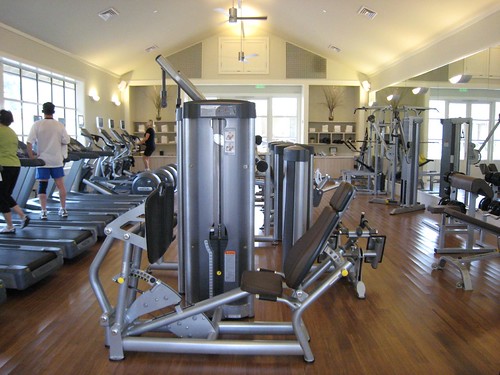Vegetables are as important to building muscle as any other nutrient. Unfortunately, too many diets that focus on building muscles all but ignore vegetables. Carbohydrates and proteins are found in vegetables as are many other vital nutrients. Vegetables are also rich in fiber. Fiber makes your body able to use the protein you consume.
Muscle building isn’t as simple as going to the gym, or lifting some weights. Many factors go into how lifting weights affects the size of your muscles. The information that is provided below will help you learn what you need to do to build muscle safely and effectively.
Never skip your warm up exercises when you are working to increase muscle mass. Once your muscles are stronger they will be more prone to injury as a result of additional stress. Warming the muscles up prior to exerting them is a key factor in avoiding injury. Prior to lifting, exercise lightly for about 10 minutes, and follow it up with about 4 light warm-up sets.
Do not forget to get enough veggies when you are trying to build muscles. Proteins, complex carbs and vegetables are all important for building muscle. There are plenty of healthy nutrients in vegetables that are not included in foods rich in carbohydrates and proteins. An additional benefit is that these are all great sources of fiber. Fiber enables your body to more effectively utilize the protein.
Always stretch thoroughly after working out to give your muscles the best chance to repair and grow properly. Holding stretches for thirty seconds will be sufficient for younger exercisers under the age of forty. If you are over 40, hold each stretch for a full minute or more. This will help prevent injuries.
Every muscle building routine should contain three classic exercises. These mass building exercises include dead lifts, bench presses and squats. Along with adding muscle, these exercises help you improve your strength and condition your body. It’s important to tailor your exercises to include variations of these regularly.
You should make sure that the number of calories you consume every day is high enough. You can find caloric calculators online which can help you plan out a diet which will meet your needs depending on how much muscle you’re trying to build. Let these tools help you to design the ideal muscle building diet.
Protein is vital to building strong muscles. Protein is one of the most important building blocks of muscles. When you don’t consume enough, your body will have a difficult time increasing muscle mass. Two-thirds of your meals and snacks should incorporate lean proteins to ensure your body has an ample supply to draw upon.
It’s important to limit working out to three or four times weekly. This allows your body to repair and regenerate itself between workouts. Over-training is a serious problem that can actually prevent you from getting effective results in the long run.
You need to watch your diet, especially on those days that you intend to work out. An hour or so before your workout, eat more calories than you would on a typical day. Make sure that you don’t eat in excess but that you moderately gauge how much you’re eating and plan your meals on the days you workout, accordingly.
Your diet is an important part of your training. In order to build muscle mass, you will want to make sure you are taking in more protein and less fat. Don’t be under the assumption that this means you can overeat; it simply means that you need to follow a healthy balanced diet. A daily multivitamin, combined with protein supplements, will make it easier to bulk up.
Muscle Groups
Never forget a pre-workout stretch. Stretching helps to warm-up your muscles, which prevents injuries. Stretching after a workout helps your muscles enter recovery phase, building up more new muscle tissue. A great tip for muscle recovery is to indulge in a regular massage, as this will ensure your muscles have an opportunity to relax.
Compound exercises are an excellent way to build muscles to their fullest extent. These are exercises which are designed to work multiple muscle groups in a single movement. One popular example of a compound exercise is bench pressing. This exercise works three muscle groups at once: the triceps, shoulders, and chest.
Creatine might prove a beneficial addition to your regimen. This supplement can help you train much longer when you have a diet that is rich in carbs and protein. Consult your doctor to see if creatine supplements are a viable option.
As you can see, there some things you can do to optimize your weight training efforts. Now that you have this great information at your disposal, you can start a muscle-building routine immediately for the quickest results.
To make sure that you get enough protein in your diet, try to eat at least 20 grams of protein at each meal. Spacing your protein consumption throughout the day allows your body to absorb it more effectively. As an example, if you require 180 grams of quality protein, you can achieve that by consuming 30 grams at each of your six meals.
